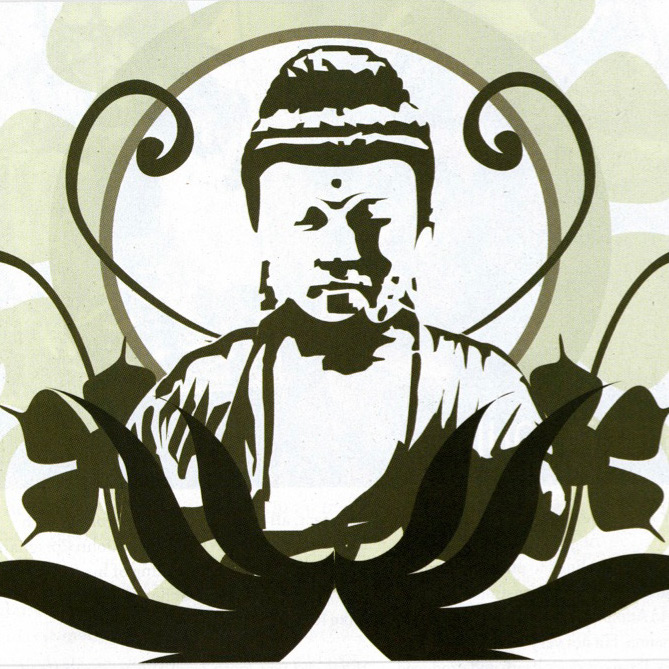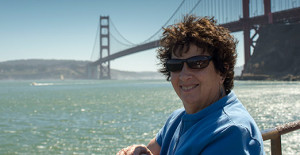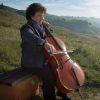
The Buddha, the Brain, & Bach: One Cellist’s Inner Exploration of Practice
Barbara Bogatin
My bare toes feel cold on the smooth cement. The scent of rosemary is hinted in a gentle breeze, as a bee glances my ear and wild turkeys caw raucously in the distance. I take a slow breath—in … pause, out … pause—and become aware of the arising of the intention to take a step.
As the weight shifts to the left side of my body, my right knee bends slightly, lifting the heel off the ground, and then the ball and the toe glide airborne over the stone till the tip of my toe reaches its destination. Balance shifts as the right foot bears the full body weight and I stand suspended, legs apart, caught in a slow-motion reenactment of a child learning to walk.
Try as I might to stay present to the vividness of my internal world, a flashback sharpens into focus: I’m 14 years old, sitting on a scuffed wooden straight-back chair with my cello between my knees as I practice string crossing, the bow moving slowly back and forth and alternating from D string to A string.
Down bow-draw from the upper arm, keep shoulder relaxed, open out from the elbow, shift the arm weight to the first finger while gradually changing the angle ever-so-slightly to the upper string—begin the up bow, leading from the fingers, bend the wrist.
Oh, wait—it’s 30 years later, and I’m at Spirit Rock Meditation Center in Woodacre, California, preparing to take my next step in walking meditation. Meditation practice, cello practice—ah, yes, no wonder it feels so familiar.
This particular light bulb of recognition went off the first time I tried to meditate. Though I’ve been playing the cello since I was eight years old, I came to meditation in my 30s, a concession to my nerdy neuroscientist boyfriend, who thought it was the answer to all life’s challenges. It was 1985, we’d been dating four years (still no ring?), and he convinced me to join him in a ten-day winter retreat at the Buddhist Insight Meditation Center in Barre, Massachusetts, where we would welcome the New Year in silence, alternating hours spent sitting on low floor cushions and treading ever-so slowly back and forth over the same well worn paths.
Not exactly my idea of a romantic vacation, but then he was a rather unconventional guy, and the retreat coincided perfectly with winter break from my job as acting principal cellist with the Milwaukee Symphony.
So I found myself wrapped in my mother’s knitted shawl sitting lotus position listening to two teachers with the very un-Buddhist sounding names of Jack Kornfield and Joseph Goldstein, who were guiding the hundred or so retreatants in vipassana, or insight meditation.
“Become aware of the sensations of the body as you listen closely to the sounds around you,” we were instructed. “Feel the breath as it enters the nostrils and expands the lungs and abdomen and slowly exhales; pay attention to your thoughts, and gradually begin to quiet your mind and cultivate a non-judgmental, neutral awareness of just what is present.”
I thought of all the hours I had spent in practice rooms through the years, trying to do exactly this. Although my six years of lessons at Juilliard with Harvey Shapiro were mostly about trying to follow his very specific instructions, once I left the school I worked with many other teachers and began to explore my learning process. I came to think of practice as a means to increase my powers of observation through focused attention, accepting yet discerning of the sounds I made. The more we listen with care and quiet our inner turmoil and “monkey mind,” the more precisely we can observe, analyze, and make corrections in our playing.
Had I been doing vipassana for years without realizing it? To understand and practice this type of meditation, there is no “dogma” or religious doctrine necessary—one need not fear reappearing as a worm in the next life if things don’t go well. In meditation, as in the practice room, you always begin exactly where you are.
You start with feeling grounded on the earth through the body, feet on the floor, bottom on the chair. You become familiar with the continuous flow of the breath. As you attempt to stay focused on the breath, thoughts and feelings come and go—you note them as they pass by: planning, worrying, memory, anger, joy, sadness.
No need to psychoanalyze that regret, just observe its contours and changeability. Show it some curiosity, interest, and love—how entrenched is that emotion? Is forgiveness lurking underneath? In meditation retreats, you sit with your fear, your inadequacies, your aloneness, long enough for something to shift in our awareness and a feeling of spaciousness to arise.
Since that first New Year’s retreat, I have frequently taken a “breather” from my busy life as a member of the San Francisco Symphony to sit at retreats at Spirit Rock not too far from my home in Marin County. I finally did get that ring, and my boyfriend-turned-spiritual guide-turned husband ended up doing research on the effects of meditation on the brain and well-being.
Along with meditation teacher Sylvia Boorstein, my husband and I have collaborated on a workshop we call “Tuning Your Instrument: The Buddha, the Brain, and Bach,” which we’ve presented at Spirit Rock, the Esalen Institute in Big Sur, and elsewhere. On our own, we’ve done a version at the Telluride Compassion Festival and Stanford Symposium for Music and the Brain. We will present it next September at the African Conference on Mindfulness in South Africa.
Though at my very first retreat I felt an immediate familiarity, the ongoing practice of meditation has provided much insight into improving my cello practicing and teaching. I think of practice as a kind of “balanced mindfulness,” cultivating a dispassionate error-signal mechanism, critical of the sound, not the self.
When learning an instrument, you often get impatient, frustrated with your slow progress, and feel the yearning of “What’s wrong with me, I should be able to play this.” As I tell my students, when it comes to playing the cello, we’re all Buddhists.
Barbara Bogatin has been a member of the San Francisco Symphony since 1994.
Along with her husband, neuroscientist Clifford Saron, she has led workshops on meditation and music practice at Spirit Rock Meditation Center, the Esalen Institute, Stanford Symposium for Music and the Brain, Telluride Compassion Festival and the Institute for Mindfulness South Africa Conference in Stellenbosch, South Africa.
Subjects: Practicing

